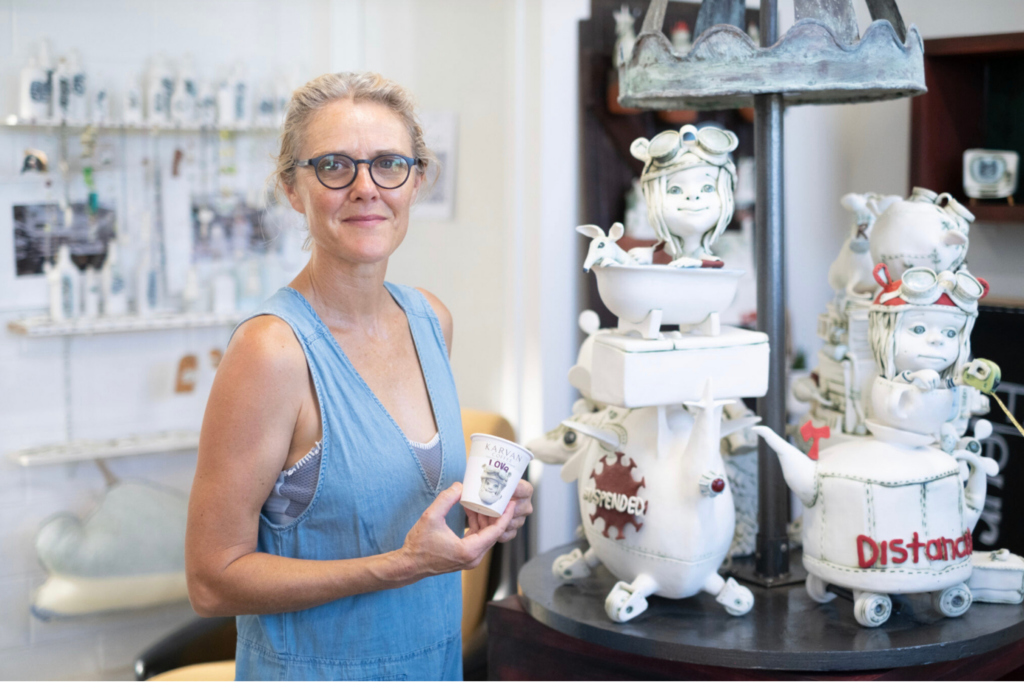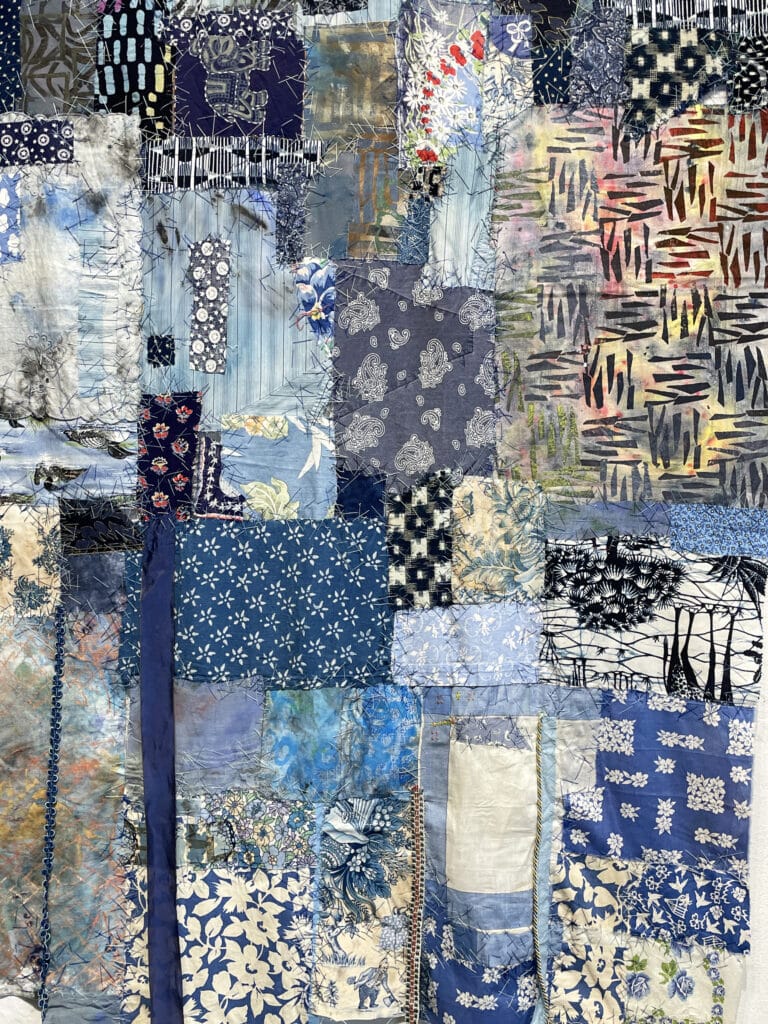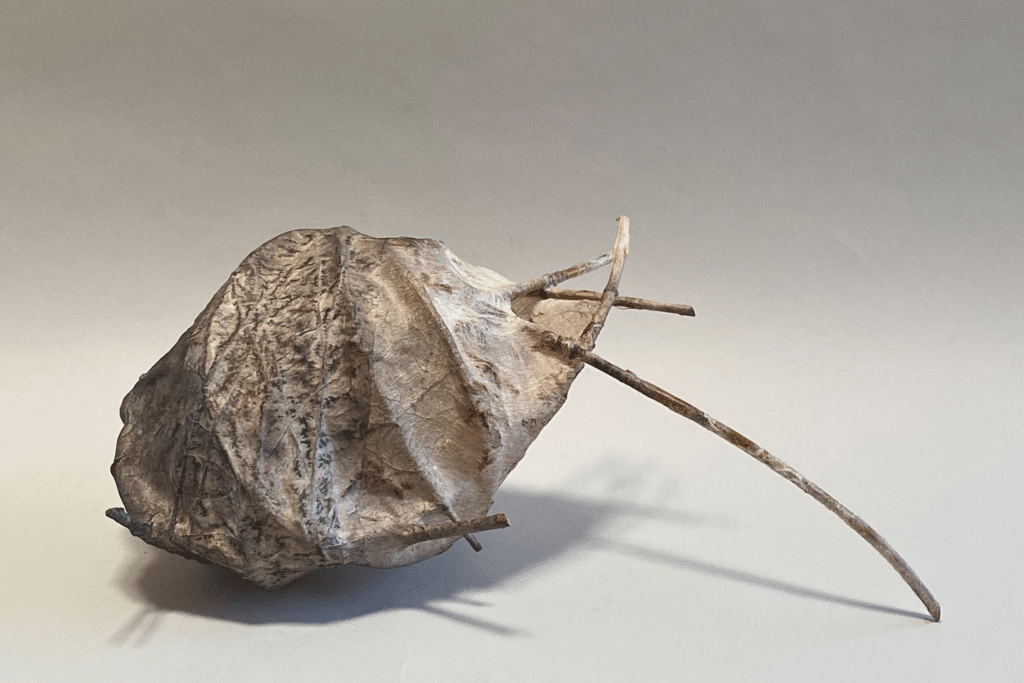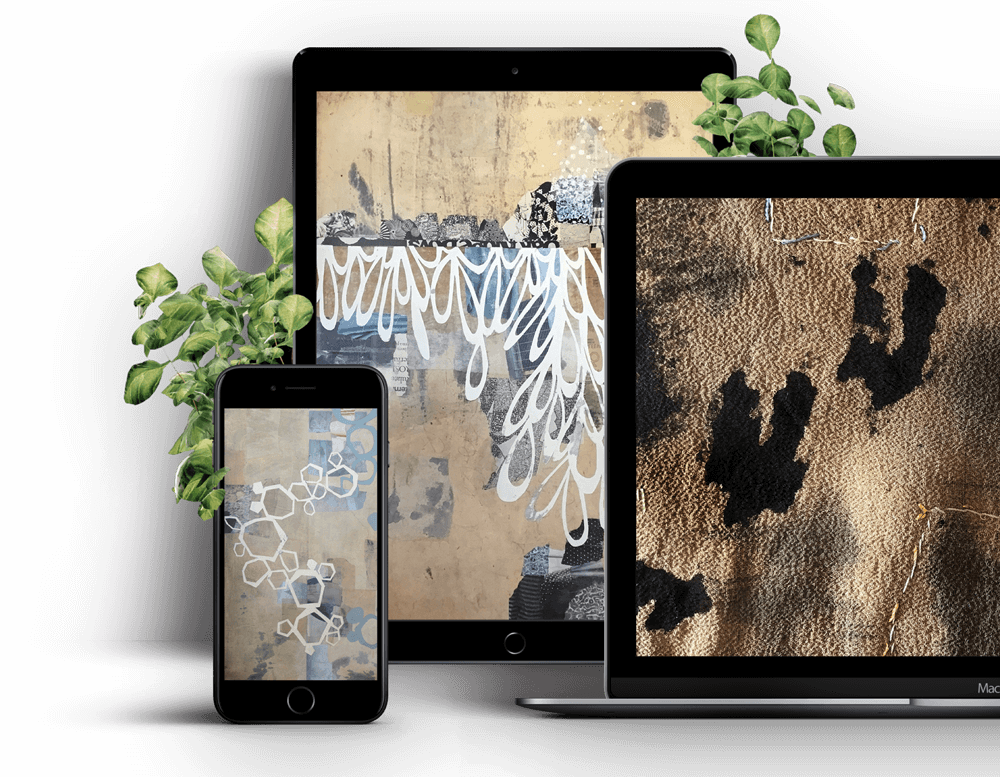Fuzzy Mall
Fuzzy Mall is not afraid to kill his darlings. Fibre Arts Take Two enjoyed learning how Fuzzy found his way to fibre arts and learned to destroy to create.
Fuzzy Mall’s Friday Feature Artist Interview can be found at the bottom of this page.
Finding his paints frozen solid one day American-born, Canadian-based artist Fuzzy Mall took a break to create something just for himself.
From a single embellished hoodie to discovering and developing an innovative approach to traditional quilting. Self-taught allowed Fuzzy breaks out of the traditional forms of quilts. Utilising prominent cutout figures rendered with complex detail, his work moves towards hyper-realism. At the same time, the viewer is drawn in closer to see that the details become surprisingly abstract. His figures are larger than life and exist independently of any background, occupying the space in a new and unexpected way. Fuzzy says ‘My intention is to reinterpret fleeting imagery by slowing the process down and hand working yet slowly creating a permanent object from an image that we are accustomed to seeing swiped away by a finger.”
Fuzzy Mall gives portraiture a contemporary edge while using time-honoured quilting skills. He updates the traditional portrait in a new and tangible way. Fibre Arts Take Two enjoyed an intriguing chat with Fuzzy about art and destruction.
Self-taught
Fuzzy’s history in art is not a straight line, “I often say I’m a self-taught painter, “he says, “I did go to school for art. At the time, I was mostly spending my time in bars, concerts, and things like that, and I didn’t really make anything. I fell in love with ceramics during my last semester in university, particularly with this grad student I ended up marrying. So I was spending all my time in the same studio. I thought that was the route I would take when I graduated. And then my professor told me to go home and paint ‘Because you’re in love, dammit’. So that’s what I did.”
Fuzzy spent around 15 years painting, but he tells us that it never really took him where he wanted to go, “It was really like a passionate hobby,” he says, “rather than a real profession. I was also a mailman and starting a family. I developed a body of work every year/year and a half and held a solo show. I had to make something. But there wasn’t anything coming out of it.”
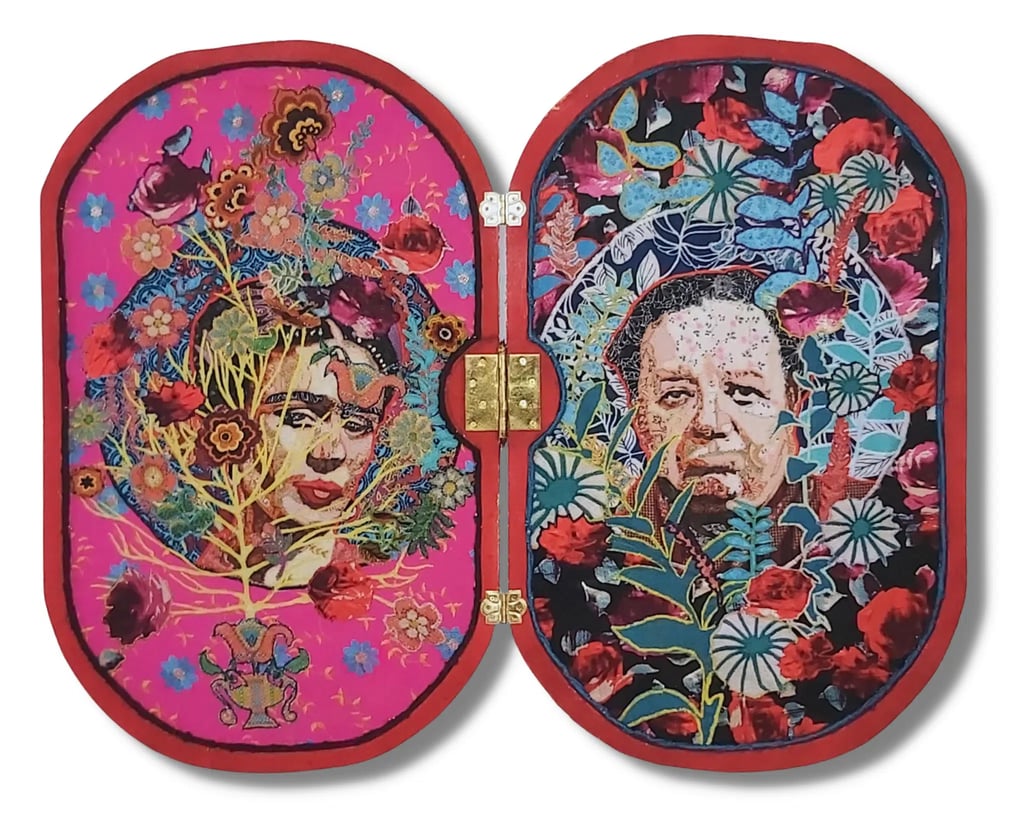
The freeze
Things changed, though, for Fuzzy one cold morning, “At the time, my studio was this cinder block garage in the midwest of the United States,” says Fuzzy, “And there was insulation. So I went out to paint and everything I had, all my wood stains and latex paints and spray paints, everything was frozen, and there was nothing I could do.”
Not one to sit on his hands, though, Fuzzy got creative, “I had to do something,” he says, “So I found this image of James Brown, projected it on my overhead projector that I used to use. Did this simple, three-colour stencil cut-out style of James Brown, sewed it on the back of a hooded sweatshirt. As I was wearing that around, I was getting a good response. People were kinda like, ‘Oh, my God, where’d you get that? Made it?’ ‘Do you want one?’ And so just developing that I’d sell them off my back.
I always had a couple of bodies of work flowing in and out, and this became one of them. Throughout the years, they just got more and more complex. I started adding more colours and figured out how to sew them. Eventually, I put one on the wall and never did an unmeaningful painting again. I just felt like I would be a textile artist rather than a painter.”
Pushing
Fuzzy loves to push boundaries, “It’s fun. It’s refreshing for me,” he says, “I’ve been pushing this craft, and I haven’t gotten to the point of realism that I want to yet. I’m striving for it, and I don’t know if it’s even achievable with the medium, you know, I’m trying to get there, and I feel like I can manipulate the fabric to make whatever image I want at this point. Or at least close to it. And now, I want to do the next stage. So it is a gutsy thing, I guess. But, like, destroy that work? Because in my mind, I can make it again if I need to. But let’s see what will come of taking it down and rebuilding it. At least at this point, I plan to keep doing this throughout my career. In my head, I’m seeing this work 30 years from now, where this is just falling apart like consumerism eating itself in a way.”
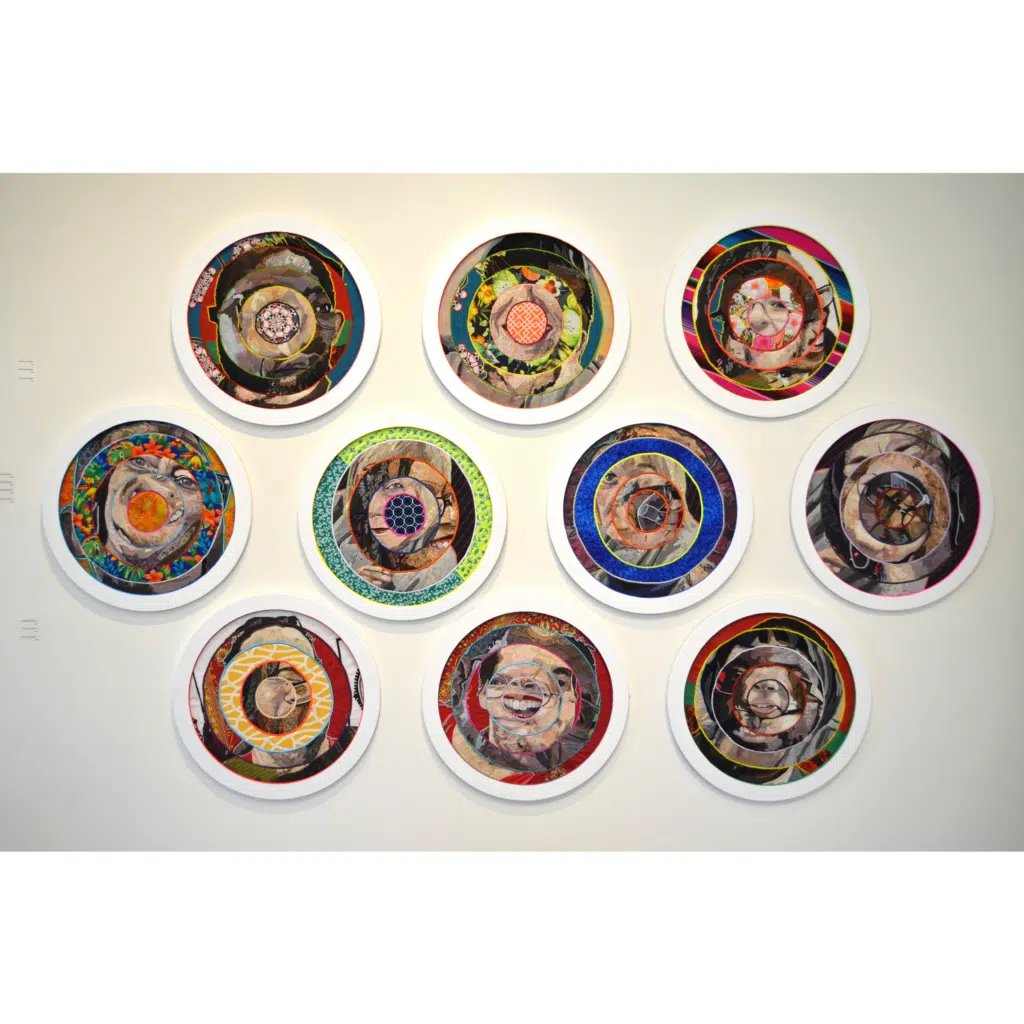
Kill Your Darlings
Fuzzy took his predilection for pushing limits to an extreme with his piece Kill Your Darlings, a William Faulkner quote.
“It was about his advice to young writers about not being precious with their work, killing off main characters, and advancing the plot. So these pieces are all constructed from my Face of Hamilton project. So I had 20, 30 pieces floating around my studio, and even when I was making that series, I knew that I was going to cut them up and change them in some way. So after they toured around for a year and a half, two years, it was time to bring them home and take the scissors to him.”
And take the scissors to them he did, “I took just about all the portraits I had remaining,” says Fuzzy, “and I just cut these concentric circles out of them, so I had 60, 70 of these rings floating around my studio. Truthfully, I treated this project like it was a formal exercise. So I take these rings out every few months, move them around, and try to find the right composition, just playing with each piece. They represented something in my head, like some kind of whatever I was thinking or if something was in the news, whether it was Black Lives Matter, gender fluidity or even mass-targeted marketing on my phone. So there wasn’t a solid through line, but formally, they all related. It was a fun little project I did, but more importantly, this piece served as a catalyst and allowed me to move forward, cut up my work, reexamine, and play around.”
What’s next?
“Probably still cutting up my work,” laughs Fuzzy when asked what he will be up to in the future, “I do have a new body of work, fully developed in my head. I’m just waiting to finish this piece, and then I’m just going out and attacking. I will be leaning harder toward the sculpture aspects. I’m always trying to break whatever expected format there is. There are so many ideas, but not enough time. “
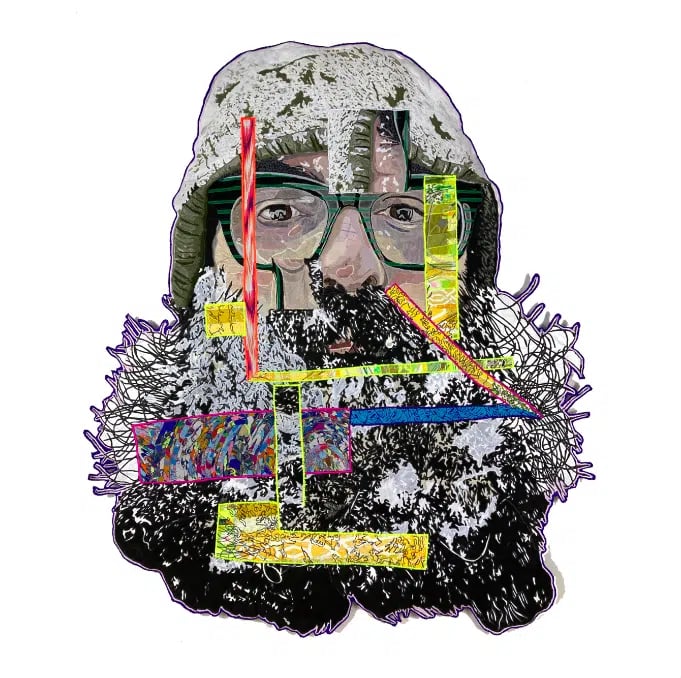
About the artist
American quilter Fuzzy Mall resides in Canada, where he creates dynamic art quilts. Using a mix of fabrics and brightly coloured threads, he updates the traditional portrait giving it a contemporary edge while using time-honoured quilting skills. “My intention is to reinterpret fleeting imagery by slowing down the process and hand-working it.”
Notifications
Join Our Newsletter
OUR YOUTUBE CHANNEL
View our interviews and more on our Youtube channel!
OUR FACEBOOK GROUP
Join our Community and stay updated with our upcoming announcements!
